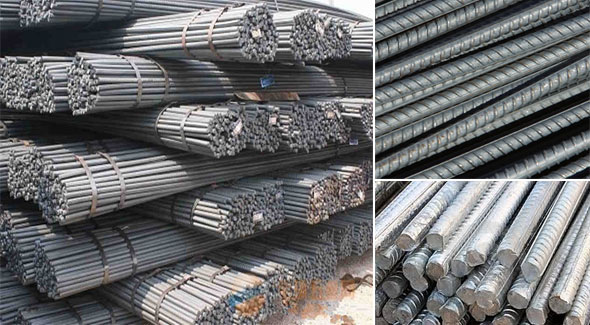Benefits and Drawbacks of Steel Reinforcement Bars
- Concrete Cost Estimator
- Concrete Continuous Footing
- Landscape Bidding and Estimating
- Construction Cost Estimating
- Concrete and steel cost estimation
- Construction Cost Estimate Breakdown
- Construction Estimating Worksheet
- Home Construction Cost Estimate
- Estimate Pricing Sheet
- Sheet for General Contractor
- Construction Cost Estimate
- Labor Materials Cost Estimator
- Masonry Estimating Sheet
- Sheet for Building Contractor
- Construction Schedule Bar chart
- General Cost Estimator Sheet
- General Construction Estimate
- Building and Road Estimating Sheet
- Detailed expense estimates
- Door and Window Takeoff Sheet
- General Construction Cost Estimating Sheet

Steel reinforcement bars are frequently utilized in building construction. They assign tensile strength to concrete and function as a single unit while combating load enforced on it.
Primarily TMT bars are utilized as steel bars. TMT bars belong to deformed bars with rough surface. Because of deformations on the surface (i.e. rough surface) The concrete is tied perfectly with the bars due to the deformations on the surface (rough surface) and thus the slippage is decreased.
Benefits of Steel Reinforcement Bars:
1. Modulus of Elasticity: Steel contains high modulus of Elasticity i.e. 200GPa (200 x 10⁹ N/m²). It allows the steel to expand in tension(upto 200GPa) devoid of rupturing and retrieve its shape on elimination of load.
2. Ductility of Steel: Ductility of steel is extreme. i.e. Steel rebar will perform ductile under greater loads.
3. Ductility means the capacity of the material for plastic deformations (i.e. stable alteration in its dimensions) under implementation of load prior to breaking.
4. Coefficient of Thermal Expansion: Steel and concrete contain almost similar coefficient of thermal expansion (alteration in dimension because temperatures). Because of this both (concrete and steel) will encounter similar length changes in greater temperatures.
5. Resistance: Steel has good resistance capacity against rough conditions throughout transport, storage, bundling and placing on construction site. In case of little damage, the performance of steel is not changed significantly.
Also Read: How to arrange reinforced steel bars in a beam on jobsite
6. Strength: It is sufficiently strong to resist high impact load.
7. Readily Available: Structural Steel industry contains sufficient production strength to satisfy the demands of construction industry and is available comfortably for any house construction.
8. Ready Build: In recent times, ready build steel is gaining popularity. Ready build steel reduces the time of cutting and bending. It not only saves huge construction time but also reduces the wastage of steel in bending and cutting.
9. Steel is recycled without problems.
Drawbacks of Steel Rebar:
1. Greater Cost: Steel is exorbitant and significantly enhances the cost of structure.
2. High Temperatures: Steel has susceptibility to melt in severely high temperatures. Because of this, the steel is bonded and not welded.
3. Reaction: If the concrete cover is less, the water can easily enter and react with steel rebars that leads to crack in concrete. Seldom concrete aggregates react with steel and allow concrete to spall.
4. Rust: If the steel is uncovered to weather, the strength of reinforced concrete is decreased due to rusts. When rusts are accumulated around the steel rebars, they produce severe internal pressure on the adjoining concrete and consequently cracks occur in concrete.
5. Weight: It is not a light weight material.

- Application of concrete calculator
- Roofing Calculator can streamline the roof estimating process
- House construction cost calculator
- Engineering column design excel spreadsheet
- Material Estimating Sheet with Excel
- Materials List and Cost Estimate Worksheet
- Concrete Slab Estimating Calculator Sheet
- Common types of foundations for buildings
- Online calculation of construction materials
- Estimating with Excel for the Small Contractor
- Concrete Beam Design Spreadsheet
- Virtual Construction Management app for construction
- Autodesk’s Project Skyscraper
- Reed Construction’s Reed Insight
- Manage your construction project documentation
- Costimator, the popular cost estimating software
- On Center Software for construction professionals
- Free Construction Estimating Software
- Plumbing Calc Pro
- Cost Estimate Worksheet
- HVAC Piping Quantity Takeoff Worksheet
- Construction Estimating Software Sheet
- Estimate Cost Templates
- Construction Punch List
- Construction cost estimating template consisting estimating basic
- Gantt Chart Template for Excel
- Download Civil Engineering Spreadsheets with Verification
- The Building Advisor Estimating and Budgeting Worksheet
- Spreadsheet for design of concrete bridge
- Construction Estimating Software Free








